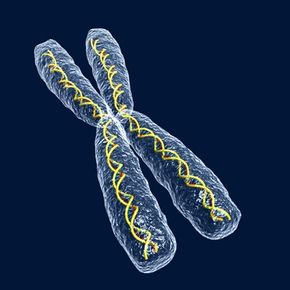Quck answer
There is no evidence of a 400 pound lobster ever being caught. The largest lobster on record weighed around 44 pounds. While lobsters can continue to grow throughout their entire lives, it is unlikely for them to reach such enormous sizes due to limited food sources and predation. The idea of a giant lobster may come from urban legends and exaggerations. So, it is safe to say that a 400 pound lobster does not exist.
Wild Animals

Marine Life Image Gallery Lobsters are mysterious creatures that have fascinated scientists for years. They have a unique appearance and are often referred to as the “cockroaches of the sea.” Despite this, lobsters are a delicacy enjoyed by people worldwide. They have a sophisticated body structure, with two types of claws, four antennae, and sensing hairs that allow them to detect prey. Lobsters eat up to 100 types of animals, including plants and other lobsters. They can even bury their food and eat it over several days. Lobsters live in a hierarchy, and it is the females who do the courting.
But the most intriguing fact about lobsters is that they show no apparent signs of aging. They are incredibly fertile and can continue breeding throughout their lives. Lobsters grow throughout their lives and are generally determined by size rather than age. The largest lobster on record weighed about 44 pounds. However, scientists are unsure of how big lobsters can get and if they have a maximum lifespan.
Professor Jelle Atema of Boston University has been studying lobsters for decades and wants to test their limits. He currently has a 15-pound lobster in a cage, free from predators and pathogens. However, even in these ideal conditions, it will be years before the lobster approaches any records. Scientists are curious about why lobsters can live so long and grow so big and what this means for other animals, including humans.
Big Lobsters and Immortality

Telomeres safeguard chromosomes from damage.
В© Photographer: Sgame | Agency: Dreamstime.com
As we age, we accept decline as a natural part of life, but lobsters are different from most living beings. In 1998, a research study revealed that lobsters maintain telomerase activation even in their later years. But before we delve into that, let’s briefly discuss cell division.
Telomeres serve as caps that shield the ends of chromosomes. During cell division, telomeres shorten. Once they reach a certain length, they can no longer protect chromosomes, and the chromosomes become damaged. The number of cell divisions before damage sets in is called the Hayflick limit.
Telomerase is an enzyme that elongates telomeres, extending their lifespan. In humans, telomerase is abundant in embryonic stem cells but declines later in life. This is beneficial because cells become cancerous when they re-activate telomerase after reaching the Hayflick limit (i.e., they don’t die when they’re supposed to). However, cells with short telomeres weaken and die, resulting in our eventual demise.
In lobsters, telomerase is present in all types of tissue, unlike in humans, where telomerase levels decline later in life and are only found in certain types of tissue. This likely explains lobsters’ ability to continue growing throughout their lifespan. Moreover, since lobsters’ skeletons are external and they can periodically shed their exoskeletons to accommodate a new, larger one, their consistent growth is not an issue. With a steady supply of telomerase, lobsters do not reach the Hayflick limit, ensuring that their cells remain youthful, robust, and dividing.
Since telomerase has a dual function of maintaining cellular health and promoting cancer growth, it is a significant area of research for both anti-aging and cancer treatments. Further investigation of lobsters may offer more insights into their longevity, maximum lifespan, and how such information could benefit human health.

Turtles and other long-lived creatures are the subjects of much scientific research.
Tom Vezo/Getty Images
Scientists are also examining other long-lived animals, such as many turtle species, which do not experience compromised immunity or physical deterioration due to aging. They also become more fertile with age and usually die from predators or unrelated illnesses rather than old age.
Leach’s storm petrel, a bird that can fit in a human hand, lives over 30 years and is the only animal known to have telomeres that grow longer with age. Related animal species with vastly different lifespans, such as conventional mice (3 years) and naked mole rats (28 years), are also of interest.
Various animals, including whales, bats, rockfish, zebrafish, and clams, are under investigation for their telomeres, with the oldest being a quahog clam, which lived for 220 years. The lifespan of these animals corresponds with the rate of telomere decay. The longer the telomeres last, the longer the animals live. Research is ongoing at different levels, such as genetic and molecular levels, as well as lifestyle, diet, and habitat. This study may help us understand aging in humans and develop treatments for aging-related diseases. One day, humans may have to thank one of these creatures or a 200-pound lobster living in peace at Boston University for the discovery of a crucial new cancer treatment. To learn more about lobsters and aging, including a song about Leroy the Uninterrupted Lobster, visit the links on the next page.
For more information about lobsters and aging, and to hear a song about Leroy, the Uninterrupted Lobster, please check out the links on the next page.
Lots More Information
Related HowStuffWorks Articles
- How Animal Camouflage Works
- How Sharks Work
- How Rip Currents Work
- How Whales Work
- How Bats Work
- How Cancer Works
- Why are the waves on the U.S. West Coast larger than the waves on the East Coast?
- Why can you hear the ocean when holding a seashell to your ear?
More Great Links
- Long Live the Lobster: Forever Young?
- Why Do Animals Age?
Sources
- “Ageless Animals, the Lobster Edition.” Methuselah Foundation. June 27, 2007. http://www.mprize.org/index.php?ctype=news&pagename= blogdetaildisplay&BID=2007062-27094442&detaildisplay=Y
- “Definition, Open Comments.” Telomerase.org. March 26, 2007. http://www.telomerase.org/serendipity/index.php?/archives/14- Definition,-Open-Comments.html
- “Facts about lobsters.” New England Aquarium. http://www.neaq.org/scilearn/research/subpage.php?id=25
- “Lobster Society: Behavior and Ecology.” Gulf of Maine Aquarium. Feb. 11, 1998. http://octopus.gma.org/lobsters/society.html
- “Longevity of lobsters is linked to ubiquitous telomerase expression.” Institute for Hematopathology, Center for Pathology and Applied Cancer Research. Christian-Albrechts-Universitat Kiel. Nov. 13, 1998. http://www.ncbi.nlm.nih.gov/sites/entrez?cmd=retrieve&db=pubmed&dopt= AbstractPlus&list_uids=9849895
- Klapper, Wolframe, Kuhn, Karen, Singh, Kumud K., Heidorn, Klaus, Parwaresch, Reza and Krupp, Guido. “Longevity of lobsters is linked to ubiquitous telomerase expression.” Institute for Hematopathology, Center for Pathology and Applied Cancer Research. Christian-Albrechts-Universitat Kiel. Dec. 3, 1998. http://www.sciencedirect.com/science?_ob=ArticleURL&_udi=B6T36-3V7 JH3Y-12&_user=10&_coverDate=11%2F13%2F1998&_rdoc=1&_fmt= &_orig=search&_sort=d&view=c&_acct=C000050221&_version=1 &_urlVersion=0&_userid=10&md5=9278c04099d6ac1eb55fc4078e 754fb4#toc5
- Krulwich, Robert. “Long Live the Lobster: Forever Young?” NPR. June 26, 2007. http://www.npr.org/templates/story/story.php?storyId=11382976
- Yeoman, Barry. “Why Do Animals Age?” National Wildlife. March 2007. http://www.nwf.org/nationalwildlife/article.cfm?issueID=113&articleId=1440
FAQ
1. Is there really a 400 pound lobster?
While there have been reports of giant lobsters weighing over 20 pounds, there is no concrete evidence of a 400 pound lobster. It is unlikely that a lobster could grow to such a massive size as they have a slow growth rate and are often caught and consumed before reaching a weight of even 10 pounds.
2. What is the largest recorded lobster?
The largest recorded lobster was caught off the coast of Nova Scotia in 1977 and weighed 44 pounds. This size is extremely rare and most lobsters caught are much smaller, averaging around 1-2 pounds.
3. Why do people believe in the existence of a 400 pound lobster?
There have been instances of misleading photographs and exaggerated stories circulating online claiming to show a massive lobster weighing 400 pounds. It is important to fact-check and not believe everything seen on the internet.
4. What is the average weight of a lobster?
The average weight of a lobster caught in the wild is around 1-2 pounds. However, lobsters raised in captivity can grow much larger, with some reaching weights of 5-10 pounds.
5. How long can a lobster live?
Lobsters have a long lifespan, with some living up to 100 years. However, they are often caught and consumed before reaching old age.
6. What is the largest lobster ever caught in Maine?
The largest lobster ever caught in Maine was in 2012 and weighed 27 pounds. This size is still considered extremely rare and most lobsters caught in Maine are between 1-2 pounds.
7. Are lobsters endangered?
Lobsters are not considered endangered, but overfishing and habitat destruction can have a negative impact on their populations. It is important to practice sustainable fishing methods to ensure the longevity of lobster populations.





Leave a Reply